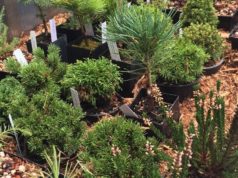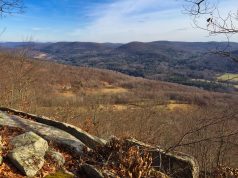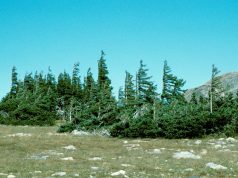There are four key ideas in landscape ecology that we can deploy in the targeting and acquisition of conservation lands:
Element 1: Interior Forest Blocks
Definition: Areas of contiguous forest and other natural communities and habitats (such as wetlands, ponds, and cliffs) that are unfragmented by roads, development, or agriculture.
Ecological Function: Forest blocks provide many ecological and biological functions critical for protecting native species and the integrity of natural systems (Austin et al. 2004), including:
•Supporting natural ecological processes such as predator-prey interactions and natural disturbance regimes;
•Helping to maintain air and water quality and flood resilience;
•Supporting the biological requirements of many plant and animal species, especially those that require interior forest habitat or require large areas to survive;
•Supporting viable populations of wide-ranging animals by allowing access to important feeding habitat, reproduction, and genetic exchange; and
•Serving as habitat for source populations of dispersing animals for recolonization of nearby habitats that may have lost their original populations of those species.
In addition, large, topographically diverse forest blocks will allow many species of plants and animals to shift to suitable habitat within a forest block in response to climate change without having to cross developed areas to access other forest blocks (Beier 2012).
Guidelines for Maintaining Ecological Function: The primary goal is to maintain the interior forest conditions that forest blocks provide by avoiding interior forest fragmentation resulting from logging, clearing, and development. For instance, silviculture skews structure within the block and results in an unnatural distribution of species and age classes. Forest blocks should be managed as lands unaltered by significant human activity, allowing nature the opportunity to maintain and restore optimum structure and function. Thus, it is self-willed land.
Element 2: Connectivity Blocks
Definition: Landscape connectivity refers to the degree to which blocks of suitable habitat are connected to each other (Noss and Cooperrider 1994). Connectivity blocks are the network of forest blocks that together provide ecological connectivity.
Ecological Function: A network of connectivity blocks allows wide-ranging animals to move across their range, allows animals to find suitable habitat for their daily and annual life needs, allows young animals to disperse, allows plant and animal species to colonize new and appropriate habitat as climate and land uses change, and contributes to ecological processes, especially genetic exchange between populations (Austin et al. 2004).
Guidelines for Maintaining Ecological Function: Similar to interior forest blocks, it is important to maintain native interior forest conditions in connectivity blocks by avoiding anthropogenic forest fragmentation. The forever wild management strategy serves to maintain the functional integrity of a connectivity block in its position in the regional wildlands network.
Element 3: Surface Waters and Riparian Areas
Definition: This is the network of all lakes, ponds, rivers, and streams, their associated riparian zones, valley bottoms, and river corridors in which geophysical processes occur as well as their connections to groundwater.
Ecological Function: Rivers, streams, lakes, swamps, and ponds provide vital habitat for a rich assemblage of aquatic species, including fish, amphibians, reptiles, invertebrates (e.g., insects, mussels, snails, worms), and plants. This represents an enormous contribution to local and regional biological diversity. The ecological integrity of an aquatic system is dependent on the condition of the watershed in which it occurs. It is also critically tied to the condition of the riparian area adjacent to the stream or pond. For stability, streams must have access to their floodplains and freedom to meander within their valley bottoms or river corridors. Naturally vegetated riparian areas provide many significant ecological functions, including stabilizing shorelines against erosion, storage of flood waters, filtration and assimilation of sediments and nutrients, shading of adjacent surface waters to help moderate water temperatures, and direct contribution of organic matter to the surface water as food and habitat structure. Riparian areas are also very essential habitat for many species of wildlife that are closely associated with the terrestrial and aquatic interface, including mink (Neovison vison), northern river otter (Lutra canadensis) (a species that actively avoids humans), beaver, kingfisher (Alcedo atthis), and wood turtle (Glyptemys insculpta). The linear nature of riparian areas contributes to their function as movement corridors for wildlife.
Guidelines for Maintaining Ecological Function: Stream channel equilibria and natural vegetation should be maintained in the riparian areas of rivers, streams, lakes, and ponds of adequate width to maintain water quality, stabilize shorelines, provide shade and biological support for aquatic systems, maintain biological diversity, and provide functional connectivity, both aquatic and terrestrial. The width of naturally vegetated riparian areas needed to provide riparian connectivity varies from 100 feet or less on some small streams (50 feet each side) to 600 feet or more (300 feet on each side) for larger rivers or riparian areas. Flood plains and step basins may increase the size of the riparian-influence area.
Element 4: Ecological Core Areas
Ecological core areas provide secure, stable, and permanent habitat for native species, unaffected by the presence of humans. Cores are surrounded by buffer areas that prevent negative impacts from more intensively used landscapes from influencing the core area. Core area boundaries must be at least 1000LF away from habitation or passable woodroads to provide suitable interior isolation in the core. Topographic features that deserve representation or offer enhanced isolation of the interior of the core are favorable additions to core areas.
Trails should not be allowed in ecological core areas. Several workers (example: Erb, P.L., McShea W.J., Guralnick R.P., 2012. Anthropogenic Influences on Macro-Level Mammal Occupancy in the Appalachian Trail Corridor. PLoS ONE 7(8): e42574 and Frid, A., Dill, L. M., 2002. Human-caused Disturbance Stimuli as a Form of Predation Risk. Conservation Ecology, 6(1):11) have found strong evidence for wildlife avoidance of trail corridors, particularly in black bear (Ursus americanus), bobcat (Lynx rufus), and white-tailed deer (Odocoileus virginianus). Disturbance from humans can indirectly affect fitness and population dynamics through energy loss and opportunity costs of risk avoidance in wildlife. The geometry of core areas can be designed to allow for trail construction in the buffer areas that surround them.
One of the potential beneficiaries of the ecological core area concept is gray fox (Urocyon cinereoargenteus), an uncommon and secretive forest species in northwestern Connecticut. The animal finds its home in older interior woodlands and swamp areas. A tree-climbing recluse, gray fox typically have home ranges of 150 acres minimum. Their den sites include hollow logs and trees, rock outcrops, underground burrows (usually the abandoned den of some other species), cavities under rocks, wood piles, and brush. Dens have been found up to 20 feet above ground in tree hollows. Benign management of interior core forests will permit the generation of their requisite habitat elements including cavity trees, canopy gaps, and coarse woody debris.
Core-area strategies also benefit the eastern hairy woodpecker (Picoides villosus), a shy species with a preference for dry upland woodlands and cavity trees (with cavities from 12” to 22” deep). Its diet is composed of 75% insect matter and 25% vegetable matter (winter food) and thus it offers excellent protection to the forest; by stripping the bark from a dead or dying tree and consuming resident wood borers or carpenter ants, they prevent these pests from spreading to nearby healthy trees. One report in the literature indicates that hairy woodpeckers can scan and feed on over 100 trees per hour. Woodpeckers also excavate homes for owls, bluebirds, tree swallows, nuthatches, chickadees, red and gray squirrels, and flying squirrels. They avoid humans and the remote nature of core areas along with passive management strategies facilitates hairy woodpecker production as the forests mature.
The northern flying squirrel (Glaucomys sabrinus) is an elusive inhabitant of northern boreal forests across much of Canada and the northern tier of the United States. It also avoids human habitats and is sensitive to disturbance. Its distribution across the Appalachian Mountains is characterized by widely disjunct populations and it is uncommon in Connecticut. Research in Pennsylvania has demonstrated that the species is tied closely to mature interior forest and it is now considered by most biologists to be a seriously threatened species because of the lack of suitable habitat. Recent surveys suggest that sites where it is still found are characterized by the presence of mature stands with closed canopies, more open ground cover, and thicker leaf litter than sites where the species does not occur. Logging can have devastating effects on flying squirrel populations because it can reduce forest canopy coverage, eliminate appropriate cavity trees, and reduce woody debris loads and the diversity or biomass of native understory plants, truffles, and lichens through a number of primary and secondary mechanisms. Tree cavities are most numerous in old forests where wood rot, frost cracking, woodpeckers, and carpenter ants have created or enlarged cavities. Their close association with mature interior forest makes them an important indicator species that may help us better understand anthropogenic effects on the environment.




